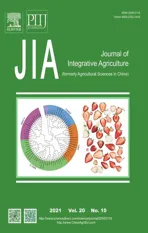Optimization of the sex pheromone-based method for trapping field populations of Phthorimaea operculella (Zeller) in South China
2021-10-22YANJunjieMEIXiangdongFENGJiawenLINZhixuStuartRElTZMENGRuixiaGAOYulin
YAN Jun-jie,MEI Xiang-dong,FENG Jia-wen,LIN Zhi-xu,Stuart RElTZ,MENG Rui-xiaGAO Yu-lin,
1 College of Agronomy,Inner Mongolia Agricultural University,Hohhot 010019,P.R.China
2 State Key Laboratory for Biology of Plant Diseases and Insect Pests,Institute of Plant Protection,Chinese Academy of Agricultural Sciences,Beijing 100193,P.R.China
3 Agricultural Technology Popularization Center of Malong District,Qujing City,Yunnan Province,Malong 655100,P.R.China
4 Department of Crop and Soil Science,Oregon State University,OR 97914,USA
5 National Center of Excellence for Tuber and Root Crop Research,Chinese Academy of Agricultural Sciences,Beijing 100081,P.R.China
Abstract Despite the identification of the potato tuber moth Phthorimaea operculella (Zeller) sex pheromone,no effective application based on this pheromone has yet been developed and evaluated. This study investigated the effect of pheromone lures,trap densities,heights of trap deployment,and pheromone doses in Yunnan,China,for the purpose of increasing the control efficiency of P. operculella and improving the application of pheromone technology in the field. The results showed that lures made of corn oil and red PVC pipes attracted the highest number of moths (11.73±1.90 per trap per day). Sex pheromone loading of 100 μg was optimal for trapping moths,but higher doses of pheromone inhibited attraction. The density of traps did not affect capture rates;therefore,the optimum trap density was 30-40 traps ha-1. The optimum height of trap deployment was not above the height of the plant canopy. This study provides technical details necessary for the monitoring and control of potato tuber moth using sex pheromones.
Keywords:Phthorimaea operculella (Zeller),sex pheromone,applied technology,trapping
1.Introduction
As the fourth most significant staple crop,potato plays a crucial role as an agricultural product in China (Gaoet al.2019). With large-scale potato plantings,multi-cropping and year-round production,pests are provided with sufficient ubiquitous resources,allowing large populations to persist and thus become a limiting factor for potato production.
The potato tuber moth (PTM),Phthorimaeaoperculella,is one of the most important pests of potato throughout the world,including China. PTMattacks a range of Solanaceous crops (Das and Raman 1994),including tobacco,but it is most damaging to potato (Gao 2018;Liet al.2019). Larvae mine leaves and stems,which can lead to plant stunting,but the greatest damage occurs when larvae mine potato tubers before harvest or during storage (Rondon and Gao 2018). PTM was first reported as a pest in China when it was found causing leaf damage on tobacco in Liuzhou,Guangxi Zhuang Autonomous Region,China. Since then,it has become widely distributed through China,especially in Sichuan,Yunnan,and Guizhou provinces (Gao 2018).
Because the larvae are internal feeders,monitoring and chemical control are difficult. Furthermore,PTM populations have shown resistance to some insecticides (Doğramacı and Tingey 2007). Numerous studies have examined alternatives to chemical control for PTM (Khorramiet al.2018;Yuanet al.2018). One promising,environmentally friendly alternative is management based on the use of sex pheromones. The female sex pheromone of PTM has been identified as a mixture of (E4,Z7)-tridecadienyl acetate (PTM1) and (E4,Z7,Z10)-tridecatrienyl acetate (PTM2) (Persoonset al.1976;Larraínet al.2009).
The efficacy of pheromone traps,either as monitoring or management tools,depends upon the blends of synthetic pheromone compounds,loading of lures,types of traps,density of traps,the height of their deployment,and other factors such as climate and insect population densities (Witzgallet al.2010). Larraínet al.(2009) evaluated the most effective density of traps deployed in the field;Hashemi (2015) also evaluated the influence of pheromone trap color and placement on catches of male potato tuber moth.However,there is still not a comprehensive assessment of factors that influence the capture of moths in pheromone trapping. Our goal was to optimize pheromone trapping as a sensitive,simple,cost-effective,and species-specific method for the monitoring and control of the PTM in southwestern China.
2.Materials and methods
Experiments were conducted in Malong District,Qujing City,Yunnan Province,China (103°82´E,25°60´N) from May to June 2019. The region is a potato-tobacco mixed production area. Because of drought conditions in 2018 and 2019,PTM populations were greater than in previous years.Potato (cv.Qingshu 9) and tobacco (cv.Yunyan 87) were used in the trials. The potatoes were planted in double rows,with 120 cm row spacing and 80 cm plant spacing. Tobacco was planted in a single row configuration,with 110 cm row spacing and 60 cm plant spacing. Both species were treated with same irrigation and fertilization regimes,and the plants grew evenly. Spraying of chemical pesticides during the tests followed practices typical for commercial farmers in the area. Experimental plots were at least 20 m from the field edge to reduce edge effects.
Tests of dose,trap density,and height of deployment were conducted in a 20-ha potato field from May 25 to June 5,2019,when potatoes were in the flowering stage. Trap type,media and materials of lures were screened in a 15-ha tobacco field from June 4 to 21,2019 when the plants had 8-10 leaves. During all test periods,the number of PTM caught by each trap was counted at intervals of 3 days,after which the traps were replaced.
2.1.Lure and trap preparation
The chemical compounds comprising the PTM sex pheromone (>95% purity) were obtained from Nanjing Xin’an Sinogreen Biological Technology Co.,China. The lures were prepared in the proportions recommended by Raman (1988),which is PTM1:PTM2=1:1.5. Commercial sex pheromone lures were provided by Beijing Pherobio Technology Co.,China.
Four media were used as carriers for the pheromone:corn oil,soybean oil,chlorinated paraffin,andn-hexane. Four materials were tested for their use as pheromone dispensers:green rubber septa,butyl rubber septa,red PVC pipes,and black polyethylene vials.
All rubber septa were soaked in 95% ethanol for 24 h,rinsed three times with water,and dried in the dark.Pheromone solutions were pipetted into dispenser grooves and completely absorbed. For red PVC pipes or black polyethylene vials,the sex pheromone,dissolved inn-hexane,was mixed with corn oil,soybean oil,or chlorinated paraffin,followed by injection of 1 mL of the mixture into the pipes or vials. All lures were wrapped in aluminum foil,and stored at -20°C before use.
Bucket traps were provided by Beijing Pherobio Technology Co.,China;yellow sticky traps,green sticky traps,blue sticky traps,delta traps,holder traps,and funnel traps were supplied by Nanjing Xin’an Sinogreen Biological Technology Co.,China. The yellow,green,and blue sticky traps were made of 30 cm×25 cm PVC sticky board;each delta trap was fitted with a 20 cm×18 cm yellow PVC sticky board at the bottom;each holder trap had a 25 cm×25 cm yellow PVC sticky board at the bottom (Fig.1).
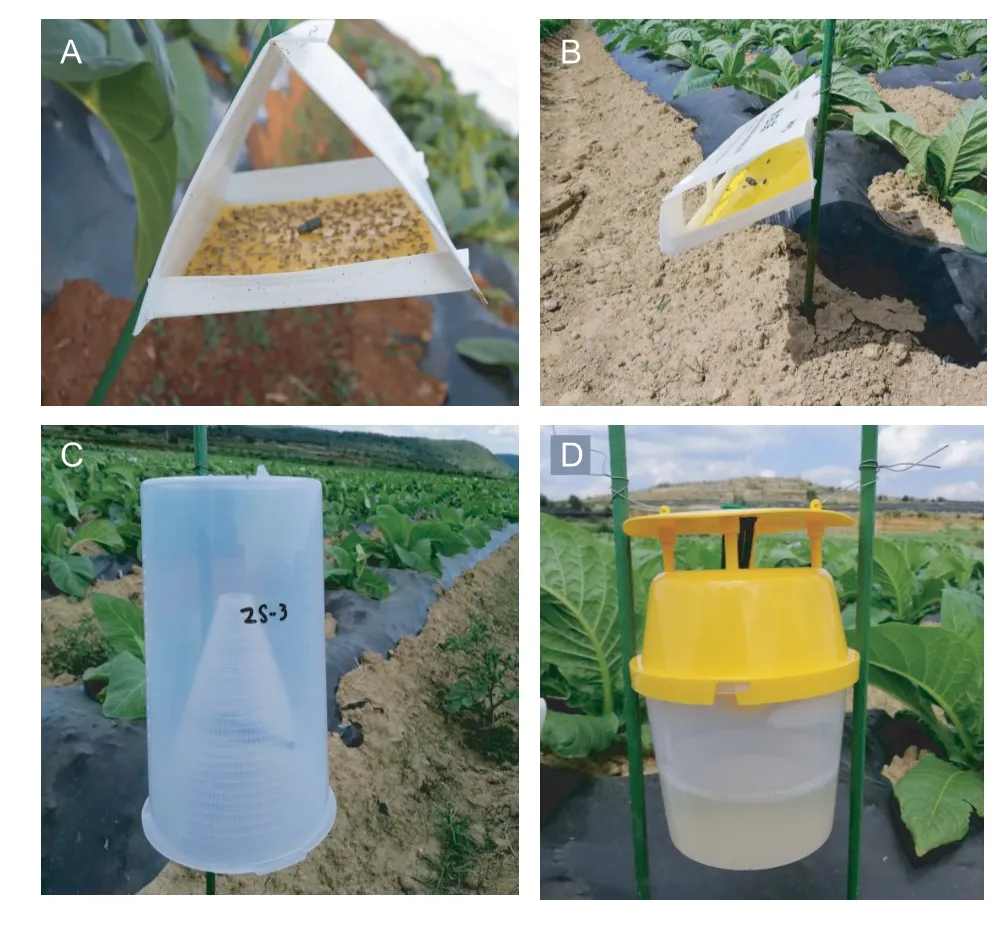
Fig.1 Four trap types.A,delta trap (20.8 cm×20.8 cm× 18.7 cm). B,holder trap (25.9 cm×25.9 cm×8 cm). C,funnel trap (diameter 15 cm and height 30 cm). D,bucket trap (top diameter 16.7 cm,bottom diameter 14.5 cm,and height 23.9 cm).
2.2.Doses
There were nine groups of treatments in this test. Doses of 0 μg (CK),50 μg (J1),100 μg (J2),200 μg (J3),500 μg (J4),800 μg (J5),1 000 μg (J6),1 500 μg (J7) and 2 000 μg (J8) of PTM sex pheromone were loaded onto the butyl rubber septa. Traps for this experiment consisted of green sticky boards. Traps were deployed at the height of the potato plant canopy. The trial had three replicates of each treatment. Treatments were randomized within the field. Replicate traps of each treatment were distributed in the upwind and downwind directions. The distance between any two traps was 10 m (Larraínet al.2009).
2.3.Trap density
The following distances between traps were tested:10,15,20 and 25 m. All traps in this trial consisted of green sticky boards and butyl rubber septa containing 500 μg PTM sex pheromone,and were deployed at the height of the potato plant canopy. Each treatment replicate was composed of four traps in the form of a square. Each replicate group was no less than 15 m away from the others.
2.4.Height of trap deployment
We deployed traps at 0,15 and 20 cm above and 15 cm below the height of potato plants. All traps consisted of green sticky board and butyl rubber septa containing 500 μg of PTM sex pheromone. The trial had three replicates of each treatment. Except for the height of traps,the placement of the traps was the same as described in Section 2.2.
2.5.Trap types
A range of alternative trap designs was also tested to develop an effective and practical trap for pest monitoring.They included yellow sticky traps (HS),green sticky traps (LV),blue sticky traps (LS),delta traps (SJ),holder traps (HX),funnel traps (ZS) and bucket traps (T). All lures used were butyl rubber septa with 500 μg PTM sex pheromone.Traps were deployed at the height of the tobacco plant canopy. The distance between any two traps was 15 m,and the trap hanging mode was the same as Section 2.2.
2.6.Lure medium and material
Based on the existing materials,we compared eight kinds of lures (Table 1). All lures contained 500 μg of PTM sex pheromone and were placed in delta traps. The placement of the traps was the same as described in Section 2.5.
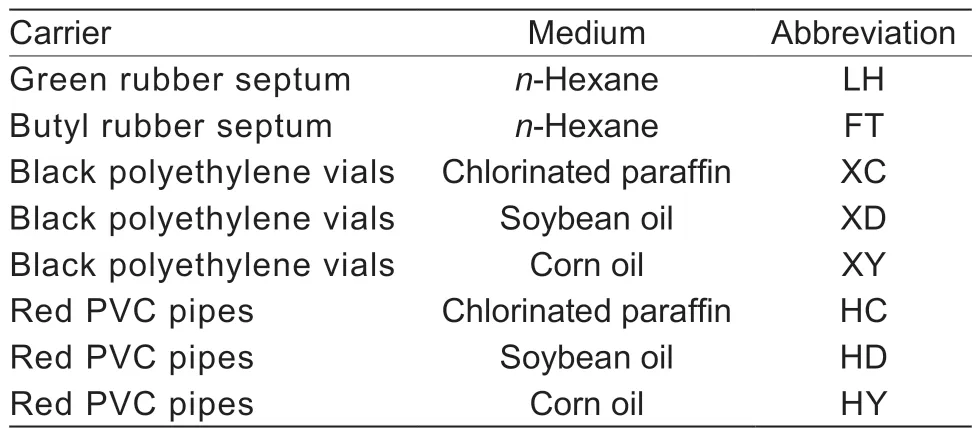
Table 1 The media and materials of the traps used for capturing male potato tuber moths
2.7.The trapping efficacy of different lures
Our lures and the commercial lures (Beijing Pherobio Technology Co.,China) were tested for their trapping efficacy in a potato field,which measured 5 ha and was harvested on 13 July. The lures used were butyl rubber septa with 100 μg PTM sex pheromone. Green sticky board traps were used with the lures for this trial. The placement of the traps was the same as described in Section 2.5. Traps were deployed from 19 April 2019 to 12 July 2019. Traps were replaced after every three days and inspected for the number of male PTM captured.
2.8.Data analysis
The means and trapping efficacies of the lures were compared with ANOVA. Pairwise comparisons were accomplished using Duncan’s test,α=0.05 in SPSS 19.0 Software. Origin 2017 was used for the graphics.
3.Results
3.1.Doses
There were significant differences among doses of the sex pheromone (F8,17=1.7;P=0.016;Fig.2) in the number of PTM males caught,although trap captures did not increase in a dose-dependent manner. The number of male moths caught was significantly higher at a dose of 100 μg (22.47±5.4 per trap per day) than at any of the other doses.

Fig.2 Effect of pheromone dose on captures male potato tuber moths. Data (mean±SE) with different letters are significantly different (α=0.05) (n=3).
3.2.Trap density
There were no significant differences in the number of PTM male adults captured by traps deployed at different densities (F3,12=0.84;P=0.49;Fig.3). When the horizontal distances between traps were 15 and 25 m,the numbers of male moths recorded were 30.90±5.31 per trap per day and 29.40±8.14 per trap per day,respectively.

Fig.3 Mean number of male potato tuber moths caught per day per trap with traps placed at different densities in potato.Data (mean±SE) with different letters are significantly different (α=0.05) (n=3).
3.3.Height of trap deployment
Trap height had significant effects on trap captures (F3,8=2.53;P=0.04;Fig.4). They decreased gradually with increases in the suspension height of the traps. When the trap was suspended 15 cm below the top of the potato canopy,the male moth captures reached 31.56±6.38 per trap per day.
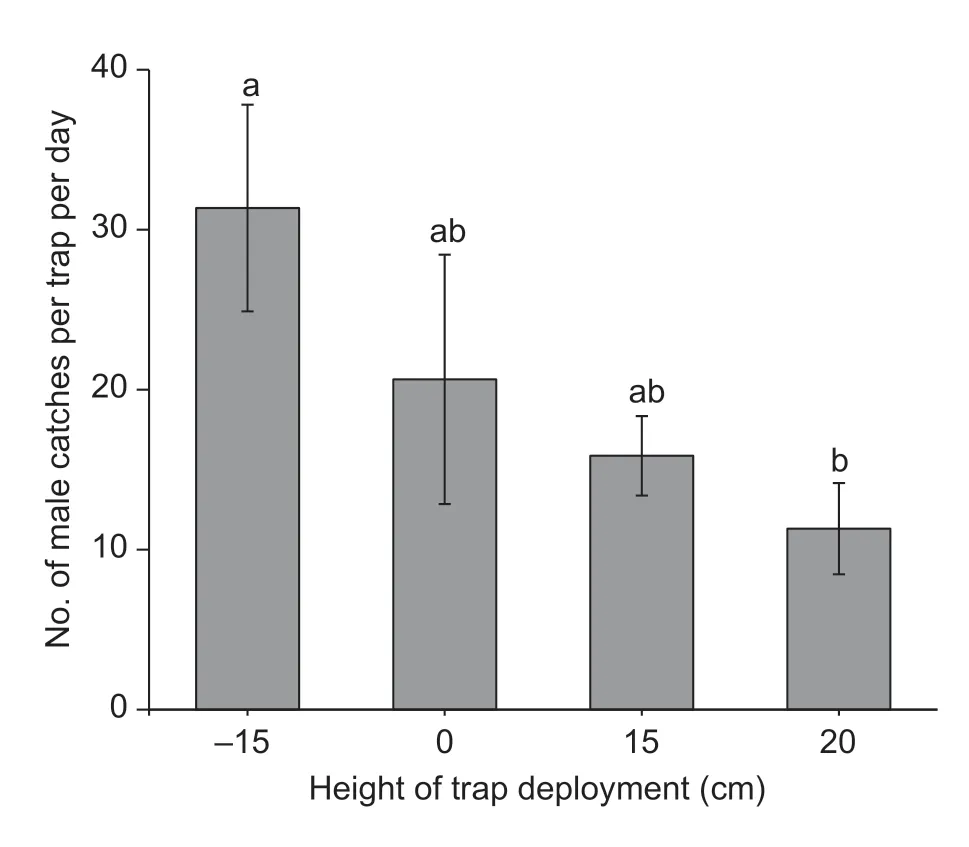
Fig.4 Mean number of male potato tuber moths caught per day per trap with traps placed at different heights relative to the top of the plant canopy. Data (mean±SE) with different letters are significantly different (α=0.05) (n=3).
3.4.Trap types
Trap type had a significant effect on PTM captures (F6,14=4.37;P=0.011;Fig.5). The traps with sticky boards captured significantly higher numbers of males than either bucket traps or funnel traps. However,there were no significant differences in captures among the different sticky board traps (α=0.05).
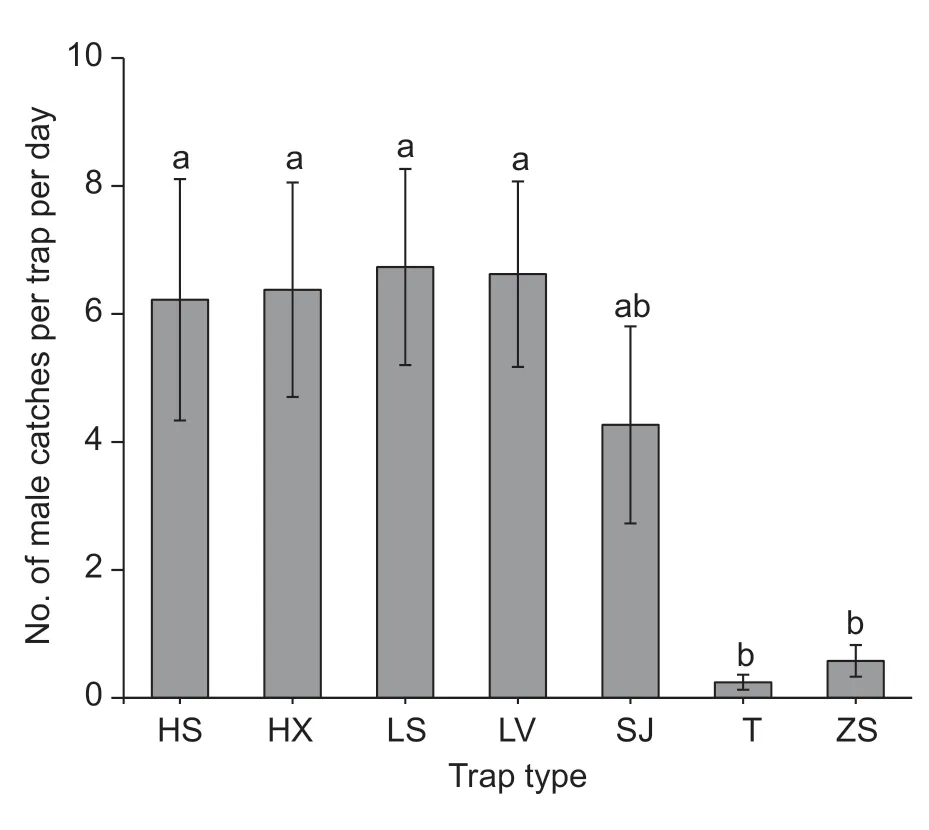
Fig.5 Mean number of male potato tuber moths caught per day per trap with different trap types. Data (mean±SE) with different letters are significantly different (α=0.05) (n=3). HS,yellow sticky trap;HX,holder trap;LS,blue sticky trap;LV,green sticky trap;SJ,delta trap;T,bucket trap;ZS,funnel trap.
3.5.The medium and material of the lures
Medium and material of the pheromone lure did affect the number of PTM male adult captures (F7,16=1.41;P=0.04;Fig.6). However,the lure material made of black polyethylene trapped the least number of PTM males (Fig.6). The lure made of corn oil and red PVC pipes trapped the highest number of PTM males,at 11.73±1.90 per trap per day,while the lure with butyl rubber septum andn-hexane trapped the lowest,at 9.13±1.51 per trap per day.
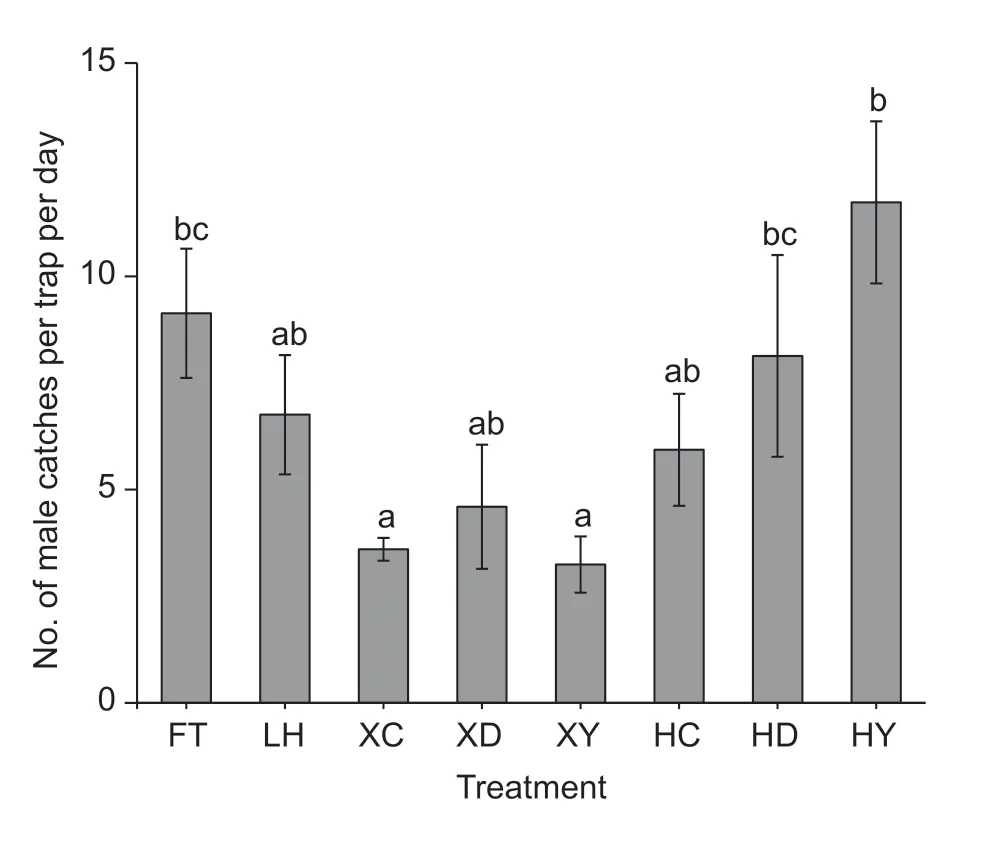
Fig.6 Mean number of male potato tuber moths caught per day per trap in traps equipped with different types of lures. Data (mean±SE) with different letters are significantly different (α=0.05) (n=3). FT,butyl rubber septum×n-hexane;LH,green rubber septum×n-hexane;XC,black polyethylene vial×chlorinated paraffin;XD,black polyethylene vial×soybean oil;XY,black polyethylene vial×corn oil;HC,red PVC pipes×chlorinated paraffin;HD,red PVC pipes×soybean oil;HY,red PVC pipes×corn oil.
3.6.The trap level of the lures
Both the experimental lure and the commercial lure were able to trap PTM males (Fig.7). However,the experimental lure trapped significantly more moths than the commercial lure. This difference showed that the trapping efficacy of the experimental lure was higher than that of the commercial lure. The differences were greatest within the first four months of the trial.
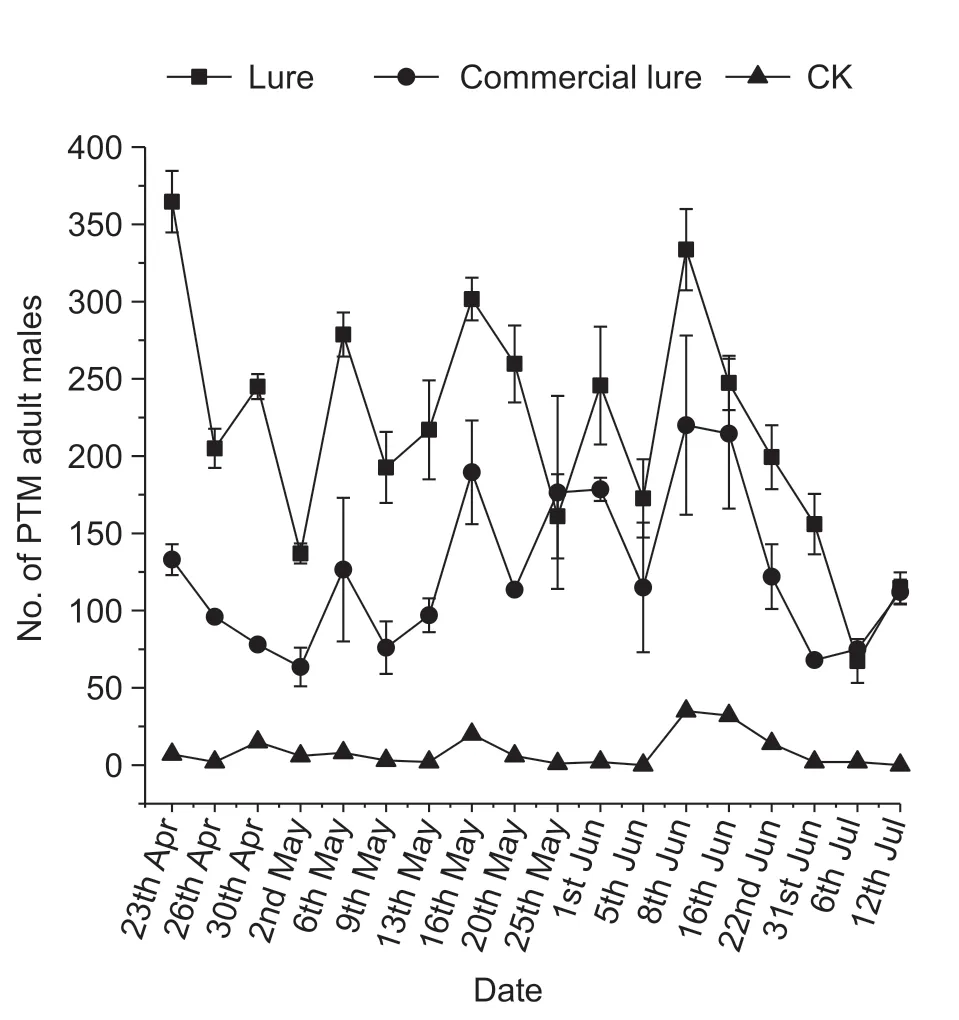
Fig.7 Assessment of sex pheromone trap level on population density of potato tuber moth (PTM) adult males by using either experimental lures or commercial lures (19 April-12 July 2019).Data are mean±SE (n=3).
4.Discussion
The effective application of sex pheromones for insect monitoring or management depends on many factors.We screened and optimized several factors for PTM sex pheromone applications,including lure loading,lure material,dispersion medium,and trap type,as well as the height and density of deployment.
In the dose-response trial,trap captures peaked at a relatively low dose of 100 μg and then decreased with increasing dosages. These results suggest PTM has a dose response to the sex pheromone of its female. Once a threshold concentration is reached,the male sense of smell reaches saturation,and a further increase in the dose of the pheromone could result in mating disruption (Tcheslavskaiaet al.2005). However,Larraínet al.(2009) observed that baiting with 200 μg of PTM sexual pheromone was the best dose. This difference in effective dose may be due to the differential sensitivity of PTM to synthetic pheromone in different regions.
The results indicate that there was no difference among trap densities. However,the numbers of male moths captured when the traps were spaced 15 or 25 m apart,were higher than others. Considering its prevention and control area,15 m would be the most suitable distance,equivalent to 40-45 traps ha-1,which is a higher density of traps than the results of a previous study in Peru (Raman 1988).
The results of the optimization of trap heights showed that the number of moths captured decreased with the height of the trap above the plant canopy. PTM has weak flight capabilities,which could impede its ability to orient to higher traps (Cameronet al.2002). Therefore,we recommend that PTM traps be suspended at the level of the host plant canopy.
The physical structure of pheromone carriers and the type of media affect the release rate of pheromones (Crosset al.2006). The lure that consisted of corn oil medium with red PVC pipes as the carrier was the most effective for trapping PTM males,while the lure that consisted of corn oil medium with black polyethylene vials as the carrier was the least effective. The trapping effect has a variable response depending on the carrier. The red PVC pipe carrier had two seals while the black polyethylene vial had only one seal. The emission of volatiles from the red PVC pipe carrier was therefore stronger than the black polyethylene vial.Lures composed of butyl rubber septa andn-hexane were as effective as the lures composed of red PVC pipes and corn oil. Therefore,economically and in terms of simple operation,the butyl rubber septum andn-hexane would be the most practical lure for use in commercial settings.
The type of trap also plays an important role in the efficacy (Whitfieldet al.2019). We found that traps that used exposed sticky boards were more effective than traps that relied on moth entry,such as the bucket,delta traps or funnel traps. However,we found that different colors of the sticky board had no effect on capture success. This is inconsistent with the results of Hashemi (2015) who reported that traps with a green sticky board trapped more PTM than other colors in Iran.
The sex pheromones of a given species of insect in different regions have been reported to have different compositions (Legrandet al.2019). This intraspecific variation may be the reason why 100 μg of PTM sex pheromone was more effective in our study in China than the 200 μg dose which was found to be more effective in Peru,where it has been proposed for use in mass trapping programs (Raman 1988). Studies onAdoxophyeshonmaihave found that the long-term use of certain sexual pheromone components alone may lead to behavioral resistance in the target species (Junet al.2007). To date,the PTM sex pheromone has not been used for mass trapping in China,and PTM populations still appear relatively sensitive to the pheromone product. Still,the potential for resistance should be considered in mass trapping programs and whether only certain pheromone components are to be evaluated for their attractiveness to PTM.
The rainy season began in the study area (Malong) in late May,so the PTM population began to decline in potato fields and potato harvest began in early June. As a result,we screened for the effectiveness of different trap types,carriers and media for lures in a tobacco field. In China,tobacco receives high inputs of insecticides to manage PTM and other pests,includingHelicoverpaassultaand aphids. Therefore,the PTM populations in the commercial tobacco fields in our study were low,which may be the main reason for the small number of captures and insignificant differences among treatments.
5.Conclusion
Our recommended lures are made of a butyl rubber septum loaded with 100 μg of PTM sex pheromone. Traps with sticky boards were more effective in trapping males than other trap types. The effective distance between traps was 15 m. We recommend that traps should be suspended above the host crop,and the height can be adjusted according to the height of the crop without affecting the growth and development of the crop. The above studies provide technical details necessary for the mass trapping of PTM using sexual pheromones.
Acknowledgements
This work was supported by the National Key Research and Development Program of China (2018YFD0200802).
Declaration of competing interest
The authors declare that they have no conflict of interest.
杂志排行
Journal of Integrative Agriculture的其它文章
- lmpacts of climate change on drought risk of winter wheat in the North China Plain
- Triple bottom-line consideration of sustainable plant disease management:From economic,sociological and ecological perspectives
- A rice geranylgeranyl reductase is essential for chloroplast development
- Rapid determination of leaf water content for monitoring waterlogging in winter wheat based on hyperspectral parameters
- Does nitrogen application rate affect the moisture content of corn grains?
- Effects of drought stress on root morphology and spatial distribution of soybean and adzuki bean
